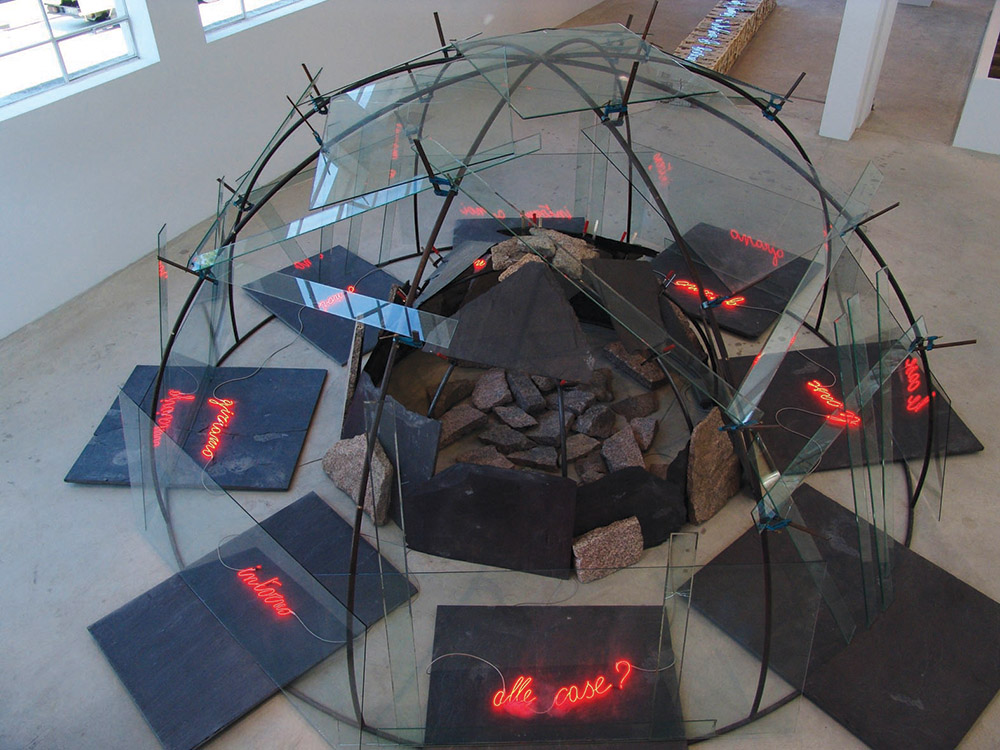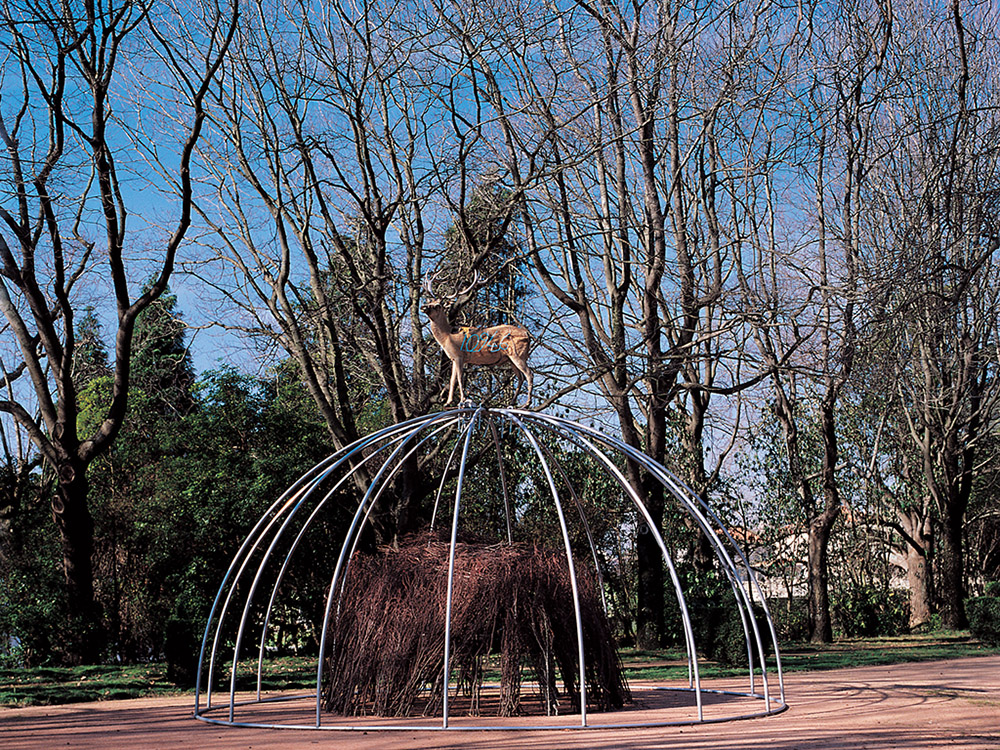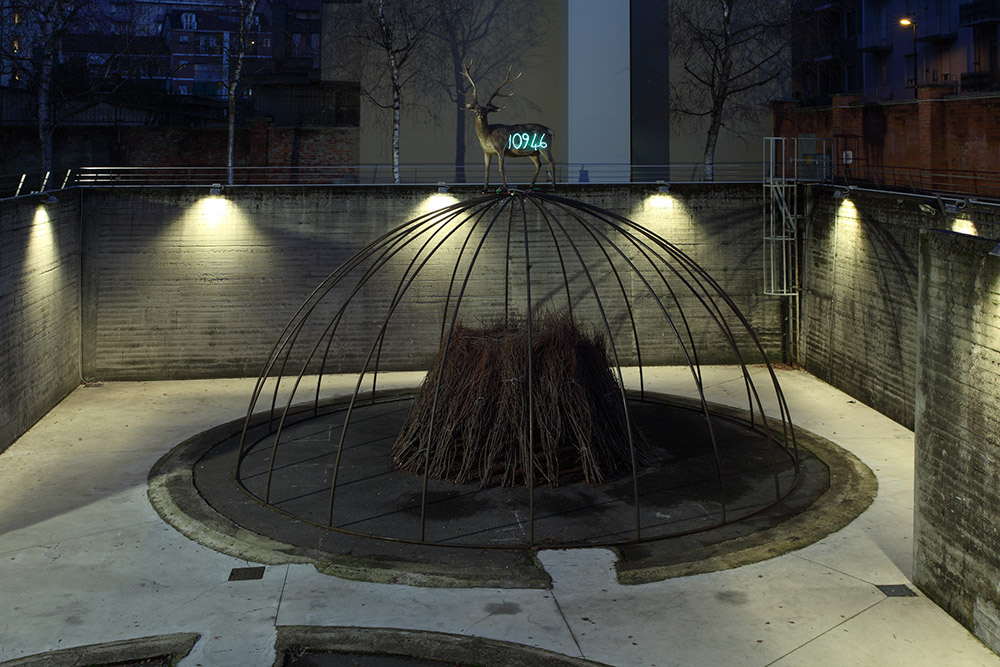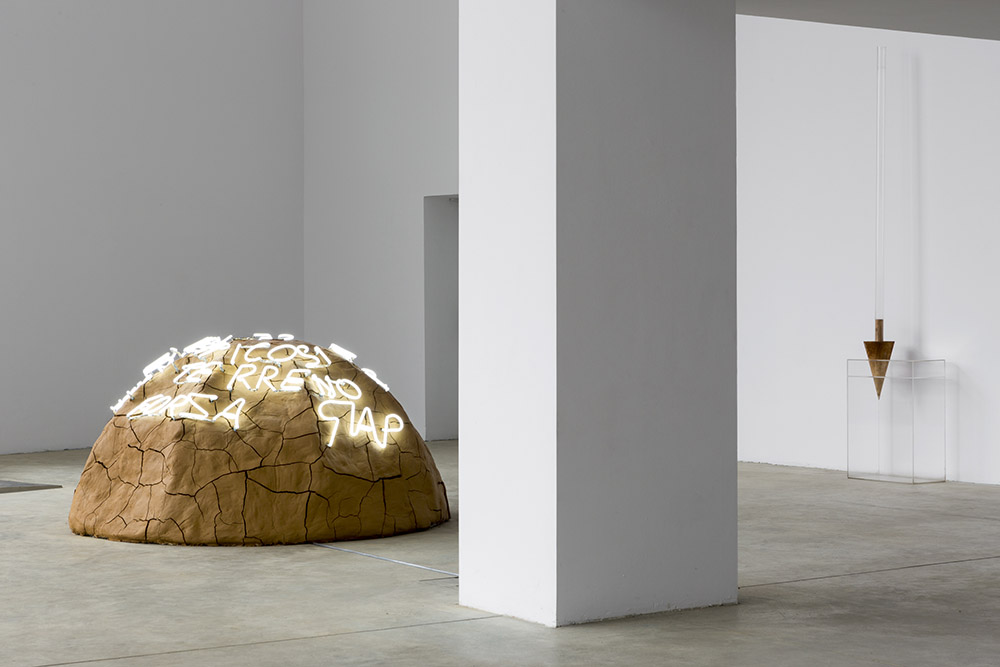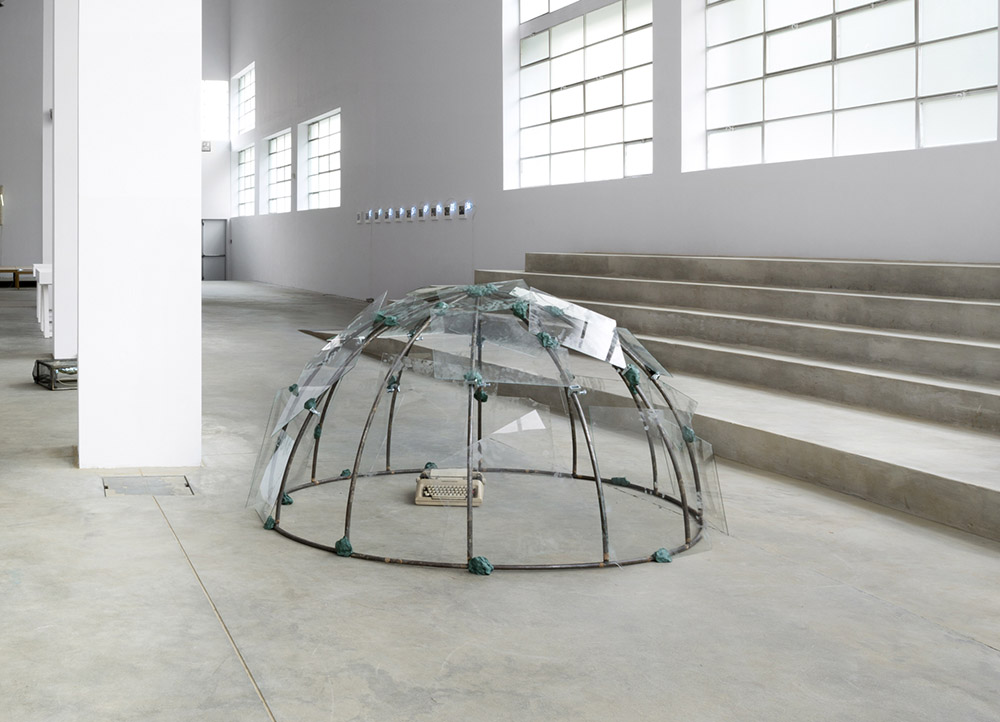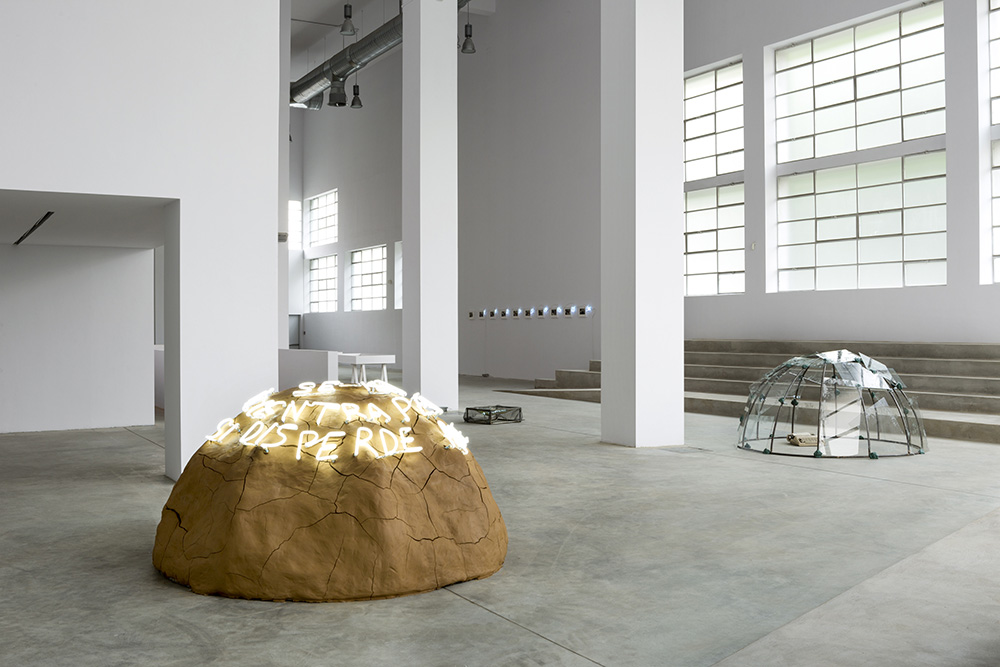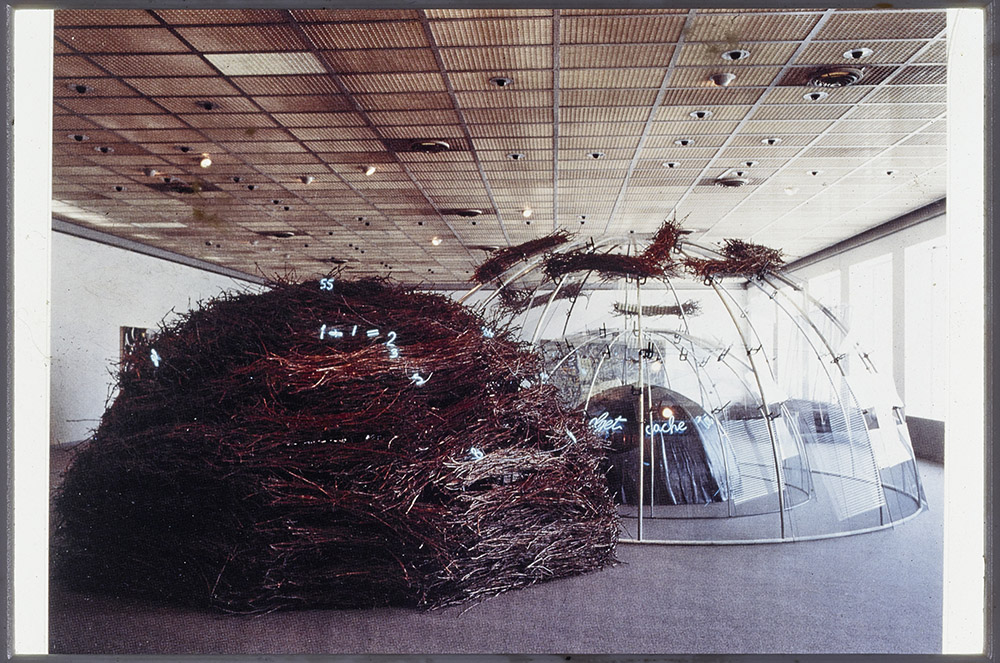ART CITIES:Milan-Mario Merz
 Mario Merz started constructing igloos in 1968 and developed the idea thereafter, creating increasingly bigger and often structurally more complicated igloos. In 1971 the artist described the igloo as “The ideal organic shape, both a world and a small house, a synthesis, a complex image”, adding, “I thoroughly torment the elementary image of an igloo, which I carry inside myself” (Part II).
Mario Merz started constructing igloos in 1968 and developed the idea thereafter, creating increasingly bigger and often structurally more complicated igloos. In 1971 the artist described the igloo as “The ideal organic shape, both a world and a small house, a synthesis, a complex image”, adding, “I thoroughly torment the elementary image of an igloo, which I carry inside myself” (Part II).
By Dimitris Lempesis
Photo: Pirelli HangarBicocca Archive
The exhibition “Igloos”, is dedicated to Mario Merz, and brings together 30 large-scale works from his most iconic group of works, the igloos, dating from 1968 until the end of his life. Through this group of works, the exhibition reveals the most innovative aspects and themes of Merz’s research, inserting it within the international contemporary artistic panorama of the last 50 years, through the use of natural and industrial materials, the poetic and evocative deployment of the written word and the dialog with the surrounding space and architecture. Mario Merz’s practice developed in Turin from the ’50s onwards. A key figure of Arte Povera, he was one of the very first in Italy to use installations, breaking through the two-dimensional nature of the picture by including neon tubes in his canvases and in everyday objects, such as umbrellas and glasses. Through his work, he investigates and represents the processes of transformation of nature and human life, using elements from the scientific-mathematical field, such as the spiral and the Fibonacci sequence, and, from 1968, introducing what would remain one of the recurring and most representative motifs of his practice for more than 30 years: the igloo. In the first of his signature igloos “Giap’s Igloo” (1968), Merz uses a phrase taken from a Vietnamese military general: “Se il nemico si concentra perde terreno se si disperde perde forza” (“If the enemy masses his forces, he loses ground; if he scatters, he loses strength”). Merz’s igloos provide a focus for his preoccupation with the necessities of life – shelter, warmth, and food – though, as here, they also often contain neon tubes that suggest more sophisticated and modern experiences, such as those of advertising and consumption. These works, visually traceable to primordial habitations, become for the artist the archetype of inhabited places and of the world, as well as a metaphor for the various relationships between interior and exterior, between physical and conceptual space, between individuality and collectivity. His igloos are characterized by a metallic structure coated in a great variety of common materials, such as clay, glass, stone, jute, and steel—often leaning or intertwined in an unstable fashion—and by the use of neon elements and wording. Fifty years since the creation of the first igloo, the exhibition provides an overview of Mario Merz’s work, of its historical importance and great innovative reach. Gathered from numerous Private Collections and Museums.
Info: Curator: Vicente Todolí, Pirelli HangarBicocca, Via Chiese 2, Milan, Duration: 25/10/18-24/2/19, Days & Hours: Thu-Sun 10:00-22:00, www.hangarbicocca.org



